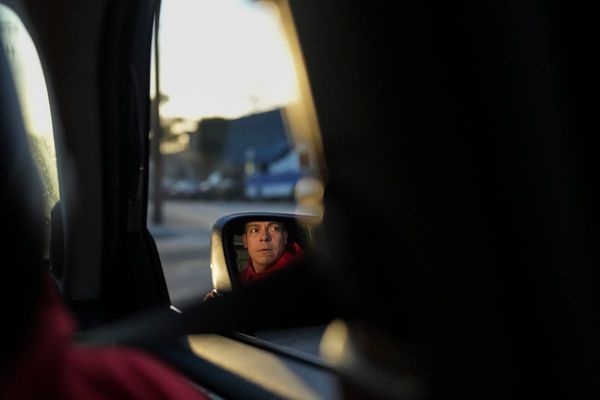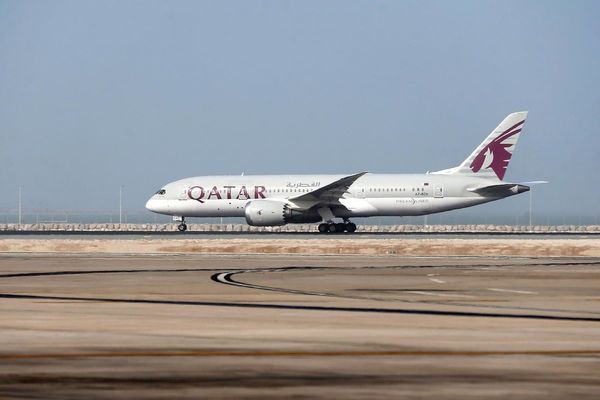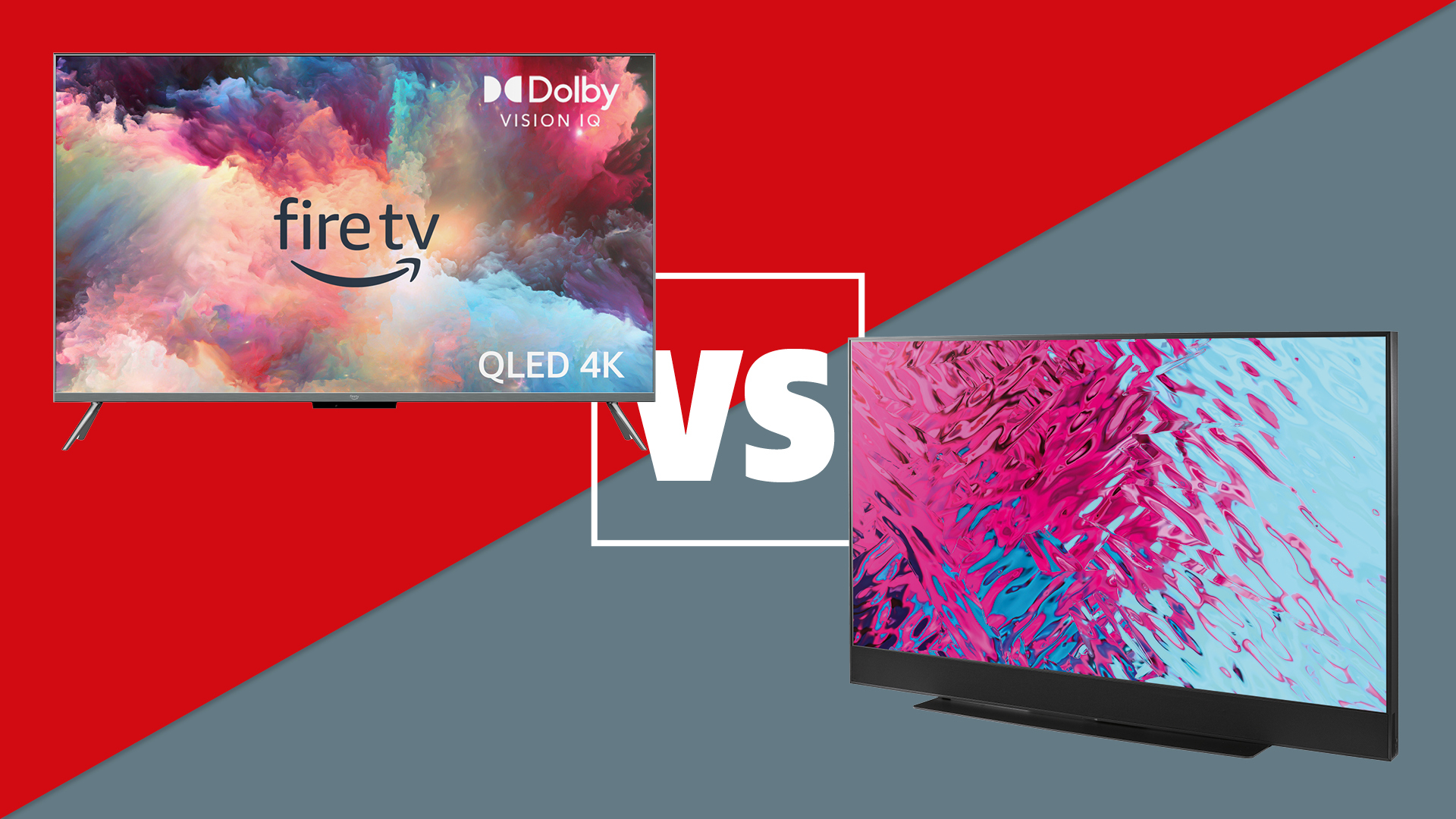
Streaming services are an integral aspect of televisions nowadays, with the affectionately labelled "dumb TVs" becoming harder to find among the abundant smart options. Both Amazon and Sky have taken the idea of the smart TV a step further by implementing their respective entertainment platforms into these reasonably priced QLED models.
Amazon has crammed its extremely popular Fire TV streaming smarts into the Fire TV Omni QLED, the top-of-the-range model in its own series of TVs. It takes the apps and features you would get from an Amazon Fire TV Stick, and puts them front and centre as the main interface for the TV.
Sky has gone down a slightly different route, creating a subscription model TV with Sky Glass. This pay-monthly hardware and entertainment service package bundles a 4K QLED TV with access to Sky's live TV service and on-demand library. It's a unique proposition, that makes good sense for those who want an all-in-one no-nonsense solution.
Sky Glass has been around for about a year and a half now and has been thoroughly tested by our team of experts. The UK launch of the Fire TV Omni QLED was only announced last month, so we haven't yet put it through our full testing process. We have seen it in action, though, and can use that experience along with a deep-dive into the specs to give an idea of how it might stack up against its Sky rival. And we will, of course, update this page once we have had the Omni TV in for its full, comparative test.
Amazon Fire TV Omni QLED vs Sky Glass: price
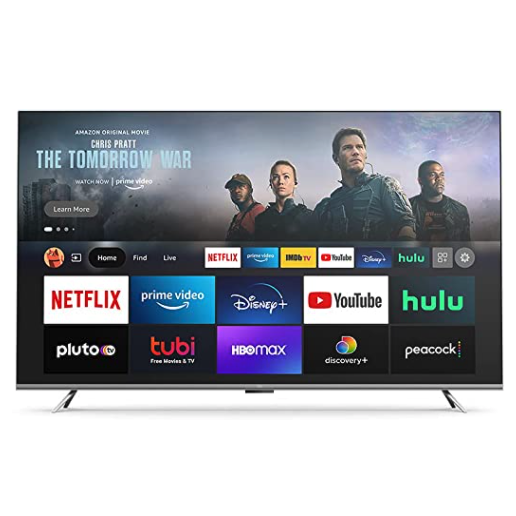
The Omni and the Glass are quite different propositions where the purchasing is involved, so comparing them for price is a bit tricky. The Fire TV is a standard, one-time purchase from Amazon (and other selected retailers soon). It costs £650 / $530 for the 50-inch set, £650 / $530 for the 55-inch, and £1000 / $800 for the 65-inch. However, Amazon has an introductory offer in the UK right now, meaning you can get the smallest Omni for just £349 at the moment.
The Sky Glass, on the other hand, requires a monthly subscription alongside a small upfront fee – think of it like a phone contract. All models require a £10 upfront fee, with the 43-inch model then coming in at £14 a month, the 55-inch model £19 a month, and the 65-inch model £24 a month. That monthly fee covers the hardware only, though, so you will need to add a Sky Entertainment package, which includes Netflix, on top of that. Sky offers the first three months of this free of charge, but after that, it's £26 a month for an 18-month contract or £29 for a 31-day rolling contract.
The Sky Glass is clearly more of a commitment – you will need to be all-in on Sky if you want to opt for the Glass. The Fire is the one to go for if you get cold feet when it comes to TVs, and don't want to tie yourself down to a recurring payment service. That being said, the Fire Omni is super streaming-focused, especially when it comes to Amazon Prime content, so prepare for some optional recurring costs.
It is also worth noting that Sky Glass is exclusive to the UK, and also that neither set is coming to Australia for now. The Fire has been on sale in the US for around six months.
Amazon Fire TV Omni QLED vs Sky Glass: design

The Sky Glass is one of the more stylish TVs around right now. It is one of very few sets on the market to come in a variety of colours (black, white, blue, green or pink). There is also a hot-swappable speaker grille cover, allowing you to mix and match colours and designs, making this one of the most customisable TVs we have come across.
The Glass is unapologetically thick in design, with squared-off edges that are reminiscent of the bold design language seen on the latest Apple iPhones and iPads. The borders around the screen are fairly thin, the chunky bottom edge that houses the speaker system aside. The Glass sits atop a rectangular base that gives the TV a subtle floating effect. It is possible to wall-mount the unit, although Sky warns that this must be done by a professional installer – something to bear in mind.
The Glass comes in 43-, 55- and 65-inch screen sizes, affectionately referred to by Sky as Small, Medium and Large. This is one fewer than the Amazon Fire TV Omni QLED, which comes in 43-, 50-, 55- and 65-inch screen sizes, as well as a 77-inch model in the US.
The Omni QLED features a much more conventional design, with a pair of A-frame feet propping up the TV at either end. Its plastic body comes only in silver, and design-wise it is fairly unremarkable. It can be wall mounted via a standard VESA mount, so it should be easier to put up than the Glass.
Amazon Fire TV Omni QLED vs Sky Glass: features
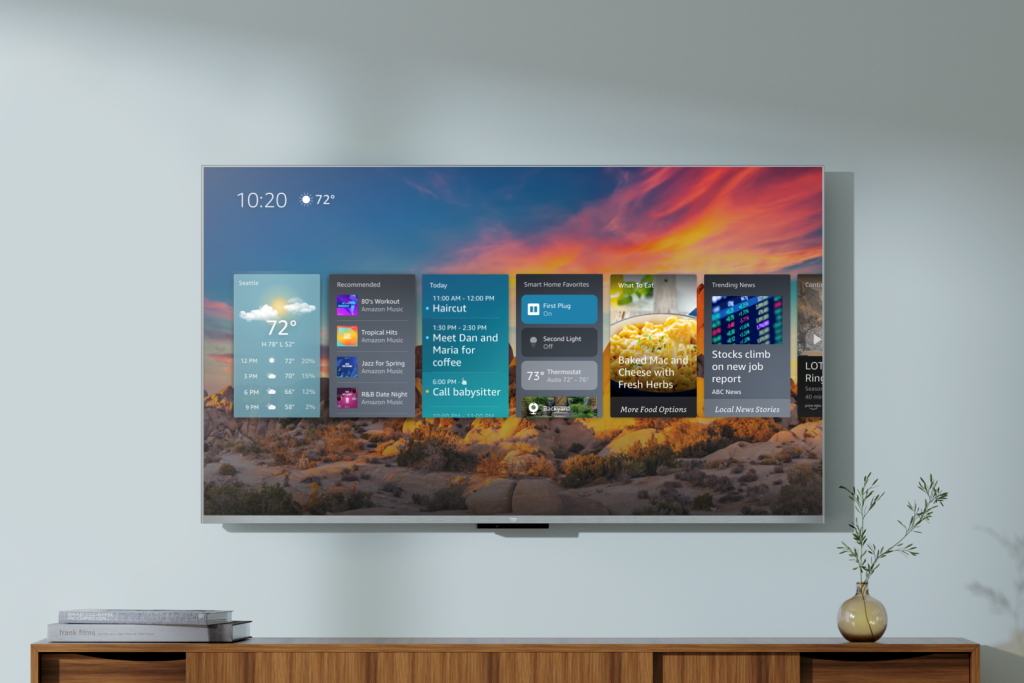
Both TVs have plenty of similarities when it comes to picture features, including QLED panels running at 4K resolution. Both sets support HDR10, HLG and Dolby Vision HDR formats; the Fire TV gets additional support with HDR10+, as well as HDR10+ Adaptive and Dolby Vision IQ thanks to the included ambient light sensor.
Both TVs also offer plenty in the way of audio features, although the Sky Glass seems more impressive on paper. It has a Dolby Atmos-certified speaker system in a 3.1.2 arrangement – three outward firing, one centralised subwoofer and two upward-firing speakers. In our review, we praise the Glass's sound performance considering its price, with a general sense of weight and depth, as well as a convincingly spacious approach to Atmos content. We haven't had a chance to test the Fire TV Omni QLED yet, but it supports Dolby Digital Plus natively, as well as Dolby Atmos through HDMI pass-through.
Speaking of HDMI, the Fire Omni has four sockets in total, with three HDMI 2.0s and one HDMI 2.1 with eARC. Impressively, Sky Glass has three HDMI 2.1 connections – one more than the top-of-the-range Sony A95K, which costs more than twice as much. Gamers shouldn't get their hopes up too much, though; the Glass is capped at 60Hz, as is the Fire Omni. There's also no ALLM or VRR support on the Glass – in fact, there aren't really any gaming features at all. The Omni QLED does get VRR between 48Hz and 60Hz; we have asked Amazon if ALLM is supported.
Both TVs are heavily influenced by their software and services, of course. The Fire TV Omni uses Amazon's Fire OS operating system, the same as its Fire TV Sticks and Cube, with all the same streaming apps including Prime Video, Netflix, Apple TV and Disney Plus, as well as UK-specific apps such as BBC iPlayer and ITV X. You will find that Amazon products, services and content feature heavily on the Fire TV homepage, but other than that compatibility should be as good as the existing streamers.
Amazon is including some exclusive features for the Omni QLED, with the headline being the Ambient Experience. This aims to make your set useful even when you aren't using it as a television, with informative widgets and personalised content solutions displayed over various pieces of art, landscape shots and even AI-generated art. You will also be able to engage with Alexa at all times thanks to the TV's far-field microphones – which makes the Omni QLED in effect a super-sized Echo Show in this Ambient Experience mode.
The Glass uses Sky's own Entertainment OS user interface, which has been developed specifically for the Glass and Sky Stream. It too features plenty of app compatibility with no notable omissions. There is also a voice assistant similar to Alexa, which you can summon with a "Hey Sky" command, followed by a request to search for or play certain content. The software is very Sky-centric, with playlisting options catering towards Sky's own on-demand streaming platforms; third-party streaming apps are intertwined within the user interface, however.
Amazon Fire TV Omni QLED vs Sky Glass: picture
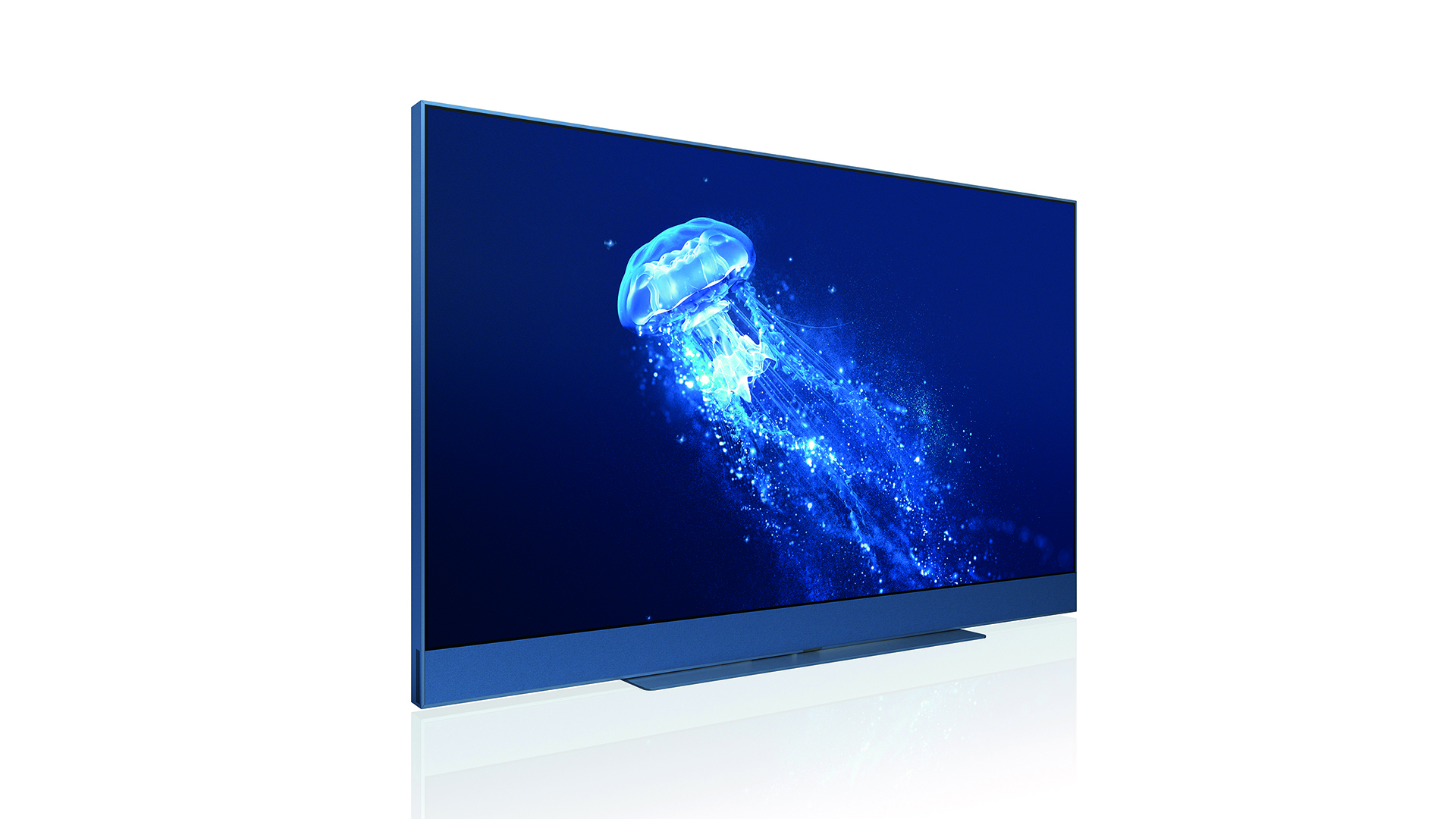
We can't properly pass judgement on the Omni QLED's image capabilities quite yet, as we have only briefly seen it in the flesh. Be sure to check back here once our full review goes live to see how these TVs compare in the picture department.
We know, though, that Sky Glass produces a decent image for the money. While it won't rival the top OLEDs when it comes to black depth, or provide class-leading contrast, the Sky Glass generally impresses when it comes to picture quality at this level. Skin tones look natural with considered shading and there is an overall cinematic feeling when the TV is paired with the right content.
The Glass isn't perfect, however. Motion takes a particular hit due to the lack of motion-processing options, which can lead at times to a smearing effect characteristic of cheaper LCD sets. We do, though, note that the Glass does not suffer from the dreaded soap opera effect. We also wish the Glass's image was a bit more vibrant, as the colours can look a touch washed out in brighter scenes – although we do have to give the Sky props for not going the way of some other budget TVs which over-sharpen and boost colours to compensate for their cheaper panels. Instead, the Glass opts for a more balanced approach which we really appreciate.
Amazon Fire TV Omni QLED vs Sky Glass: verdict
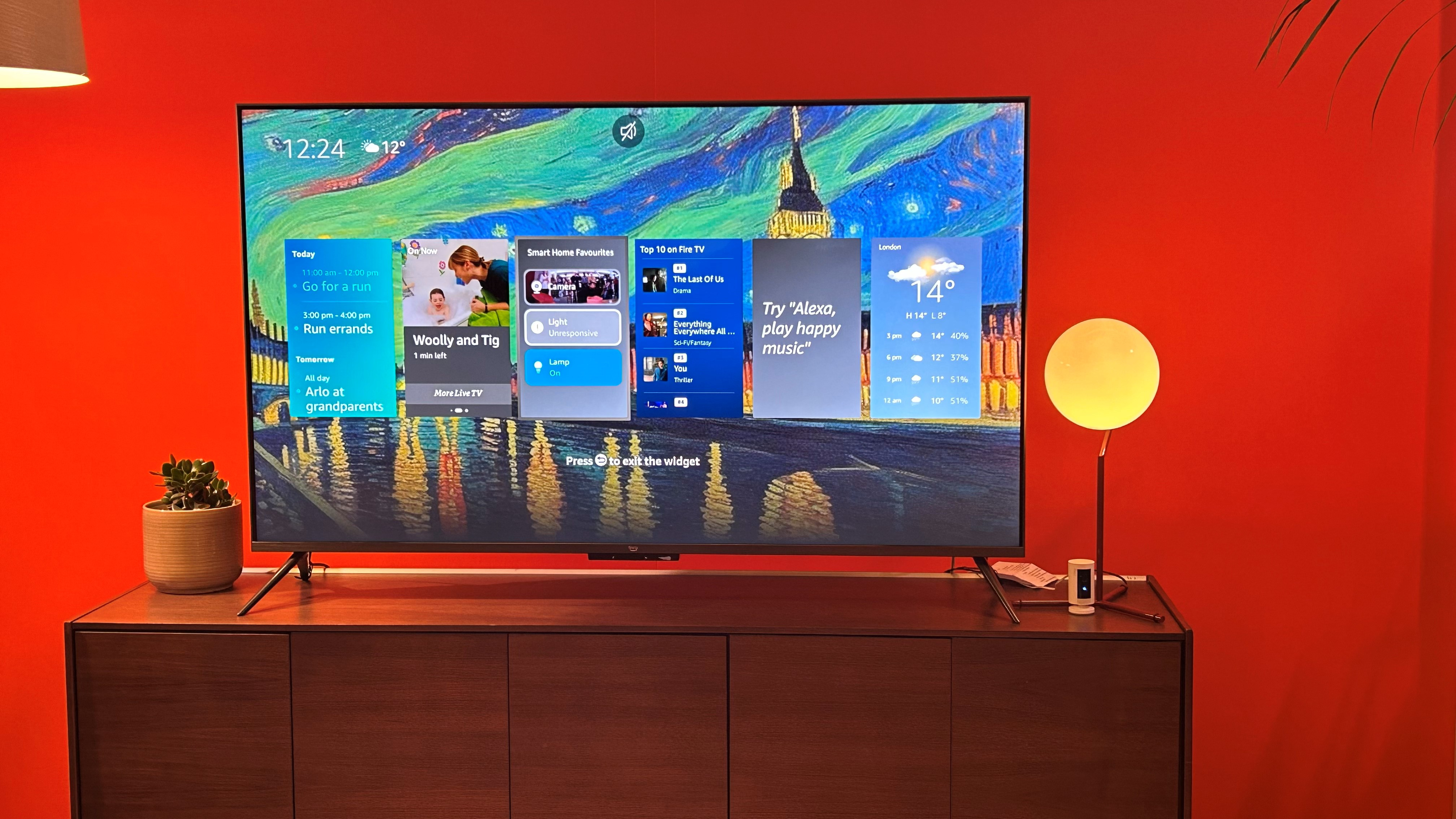
While we know exactly how we feel about the Sky Glass, it's too early for us to make up our minds about the Amazon Fire TV Omni QLED. It seems like a pretty decent-value proposition right now, but we can't say for certain how it will compare when it comes to sound and picture.
There is one easy way to pick between these TVs, however, and that's deciding if you want Sky TV. If you do, then the Glass is for you; if you don't, go for the Omni QLED. You could use the Glass without Sky TV, but the tech is so heavily ingrained in the unit that we wouldn't really recommend it.
There are plenty of affordable QLED sets on the market from the likes of TCL and Hisense, and the Omni adds fuel to the Fire. The Amazon set also has the benefit of being a one-off purchase that is supplemented by whichever streaming services you care to choose.
MORE:
Read our full Sky Glass review
As well as our Amazon Fire TV Omni QLED hands-on review
Check out our picks for the best TVs
